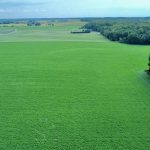Prairie producers aren’t realizing the full potential of canola, says an expert on the increasingly popular oilseed.
With proper management, producers should be able to see an 80 bushel per acre return on the crop, explained Phil Thomas, a senior agri-coach at Agri-Trend. Thomas presented his case for proper canola management at the Agri-Trend 2011 Farm Forum in Saskatoon on Dec. 1.
“We don’t even touch the genetic potential of our varieties, because we can get — under irrigation with real good management — 120 bushels per acre.”
By properly managing soil nutrients and seeding, and improving the plant’s water-use efficiency, producers in dryland conditions should be able to see returns far beyond 30 and 40 bushels per acre, he said.
Thomas warned that producers may be under fertilizing canola. He stressed the important role nutrients like nitrogen, phosphorous, sulfur, potassium and boron play in boosting plant height, branch pods and yield per plant.
Producers shouldn’t skim on input costs, he said.
“Sometimes they’re shooting themselves in the foot reducing some of those key inputs,” said Thomas. “Paying an extra ten bucks for (nitrogen) might have a huge impact on their water use efficiency and yield.”
Another commonly made mistake relates to seeding depth, Thomas explained. Thomas recommends a more shallow depth — a half-inch — for seeding.
“If they’re not checking, they could be easily down to an inch-and-a-half,” said Thomas.
In his presentation, he cited research showing canola emergence can improve as much as 50 percent when planted at a slower rate and shallower depth (four miles per hour at one centimeter compared to seven mph and four cm).
Soil moisture remains a key factor while seeding, he explained. A deep seed depth in dry conditions can result in much lower emergence.
Canola remains a relatively new crop, said Thomas, with a steady stream of new breakthroughs as researchers battle disease and herbicide resistance and seek higher yields.
The development of a canola variety with an improved tolerance to high temperatures will be of benefit to producers in Western Canada. High temperatures during the flowering stage can significantly impact yields. A higher tolerance will allow farmers to seed earlier and, ultimately, see improved vegetative growth, explained Thomas.
“We can then not worry so much about seeding during real early periods, so we flower early and we’d have those varieties be able to withstand 30 to 34 degrees.”








